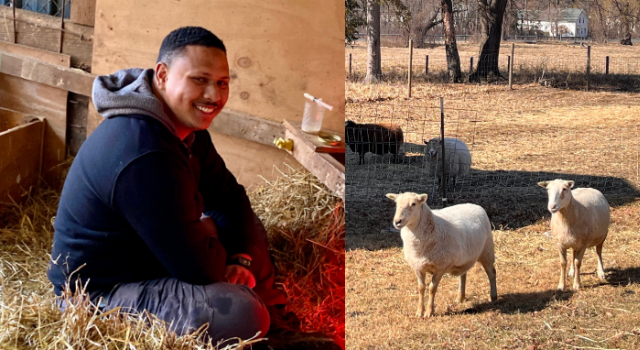Division III: Bats Around the World
Justin Baldwin arrived at Hampshire with an interest in ornithology, the study of birds. A semester abroad in Costa Rica, however, cemented an interest in another sort of winged creature: the bat.
"The diversity of bats blows my mind," said Baldwin 08F. "There are over 1,000 species worldwide, and over a hundred species in Costa Rica alone. The fruit-eating ones disperse lots of seeds, and are essentially the unheralded gardeners of tropical forests. They're an amazing model system to test fundamental questions of adaptation and evolution. And they're really cute, too."
Baldwin, who was born in Buffalo, New York, but grew up in Germany, is completing his Div III with a project that both directly and tangentially looks at bats and their relationship to the world around them. He began the project in fall 2011, but spent the past year in the field in order to study bats in different locations around the world.
"It's great to be able to do this kind of research," said Baldwin. "At Hampshire I've felt the freedom to pursue any projects I'm interested in."
The main chapter of his Div III focuses on the ecological evolution of spiciness in a group of tropical plants. Research suggests that they evolved to deter fungal or insect predators, but little is known about how these compounds influence beneficial seed-dispersing animals like bats.
"A couple of different compounds have been found that cause the spiciness," said Baldwin, who brought roughly 10,000 seeds back to Hampshire and built a germination chamber with botany professor Lawrence Winship to study the plants. "Only by weighing the different functions that spicy compounds have can you figure out what's driving their evolution."
A second chapter in Baldwin's Div III looks at the sexual dimorphism and wing shape of the greater Noctule, a European bat. He began studying them through his involvement with the Max Planck Institute of Ornithology.
"It's a cool species in that it behaves a lot like a bird," said Baldwin, who noted that, after hibernating in caves in southern Europe through winter, pregnant females fly off to southern Sweden and northern Poland, likely to take advantage of insect-rich wetlands there. "Nobody had direct data on how they do that. We followed them by plane, bike, and car during their migration. When flying in the plane, we'd find them hundreds of kilometers away the next day. I thought that, if only the females are doing these long-distance migration marathons, they might have more aerodynamically-shaped wings than males."
After graduation, Baldwin will head to Vermont for a bird-monitoring program, and then continue on to Peru in the fall for further bird research while applying for funding for his master's degree.
Division III faculty committee: Ecology professor Charlene D'Avanzo and linguistics professor Mark Feinstein (co-chairs); entomology and ecology professor Brian Schultz



